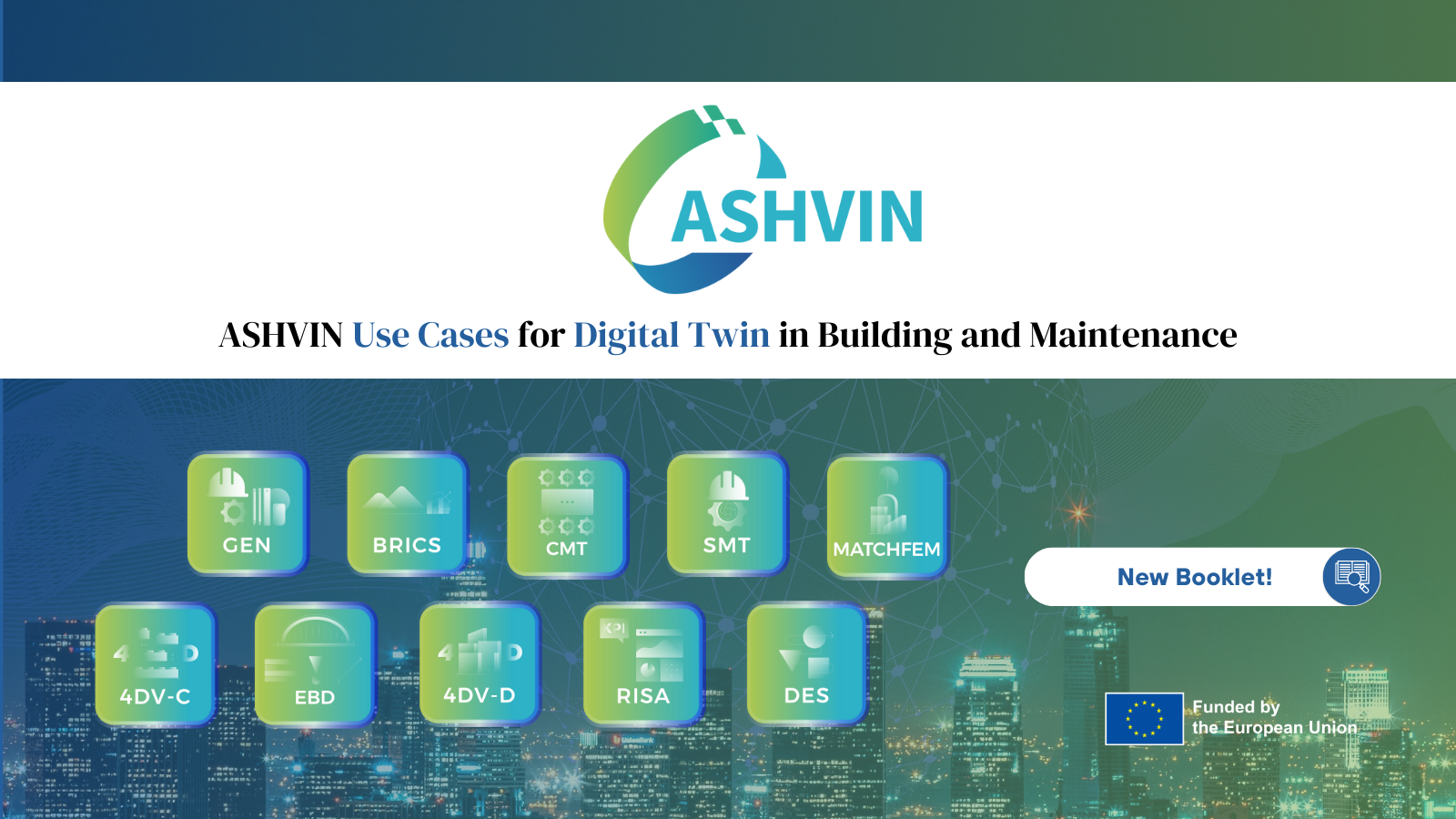Meeting with our Groundbreaking Researchers
The integration of digital twins emerges as a potent and transformative tool, presenting unparalleled capabilities to optimise maintenance operations. Within the construction sector, this technology serves as a catalyst for proactive decision-making and precision in asset management. At the forefront of advancements in the maintenance phase, we collaborate closely with the Polytechnic University of Catalonia, where PhD Research Student Carlos Ramonell plays a pivotal role in the ASHVIN research team.
We are pleased to present you with this #2 interview from our series of discussions with the new generation of researchers participating in the ASHVIN project as a part of their MSc, PhD or Postgraduate studies. They will share their research approach in ASHVIN and plans to continue exploiting this work beyond the project.
Today, we meet Carlos Ramonell, a dedicated researcher working with the ASHVIN project since its beginning, back in October 2020. Having transitioned from completing his master’s thesis to enrolling as a PhD student under the mentorship of Professor Rolando Chacón, Carlos has been actively involved in shaping the ASHVIN project, particularly in the domain of digital twins for the maintenance stage of built assets, as outlined in Work Package 5 (WP5). And this conversation provides valuable insights into his research journey.
We encourage you to watch this video, where Carlos shares his expertise for a comprehensive understanding. This presentation sets the stage for further discussions, marking the second episode of our enlightening #ResearchStories series.
Hello Carlos, we are very pleased to share this moment with you.
Hello, thanks for having me today.
Could you describe the scope of your research, and how it is related to Digital Building Twins?
Well, my research has been fully focused on digital twins of buildings and bridges: from their conceptual definition to their implementation in the ASHVIN web-based platform. It ecompasses information modelling, using advanced methods for data capturing, and software design and development.
Which aspects of ASHVIN are relevant to your research ?
The most relevant aspect of ASHVIN is the access to a lot of different demonstrators. Having these real assets to test our ideas was key to establishing the roadmap of what needed to clarify and develop. I’ve been lucky to participate in 5 different demonstrators, which include road and railway bridges, an office building, an airport, and the Olympic stadium of Munich.
Another key aspect is the need to deliver a web-based application at the end of the project. Collaborating closely with the technical coordinator of the project, Digital Twin Technology (DT, in this matter taught me a lot about how the web works and how applications are developed, which is majorly influencing my research.
Which challenges have you faced while doing your research?
The main challenge I’ve faced is the integration of multiple information sources to be provided to the final web-based digital twin platform. In WP5, we are using BIM, Structural Simulations, data stored in the Mainflux IoT Platform and information about specific maintenance processes which need to be interlinked in a meaningful way.
One last question, the ASHVIN project is ending in March 2024, what will you take with you from the project for the next steps of your research and professional development ?
We have gained extensive knowledge in various domains, with a particular emphasis on employing digital tools and programming for crafting tailored digital assets. We are now figuring out how to use all this knowledge to help AECO companies in Barcelona become more digital. The project opened many possibilities for future research, too.
I’m excited to see what’s coming!
Thanks for your time, we wish you the best for your future research and work in Barcelona!
💡 Did you know that behind the scenes in the ASHVIN project, there are over 30 university students, from different degrees, contributing to the project’s research related to the technical development of the digital twin system and to its demonstration in real-life sites?
Our academic partners, the Technical University of Berlin (TUB), Erasmus University of Rotterdam (EUR) and Polytechnic University of Catalonia (UPC), oversee their involvement in this project.





